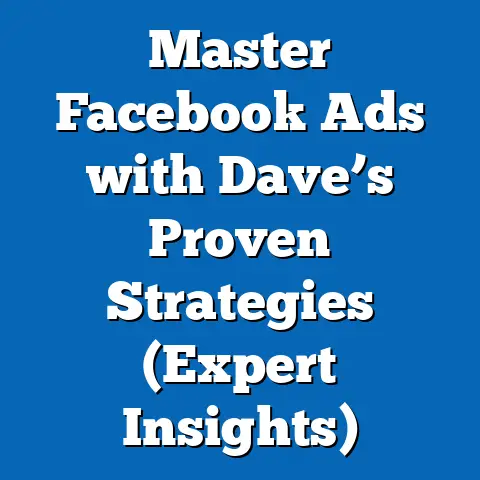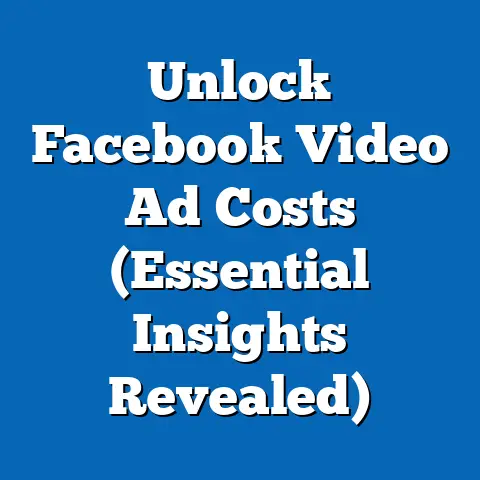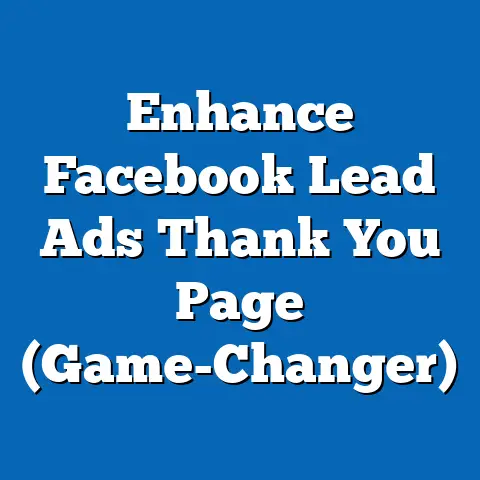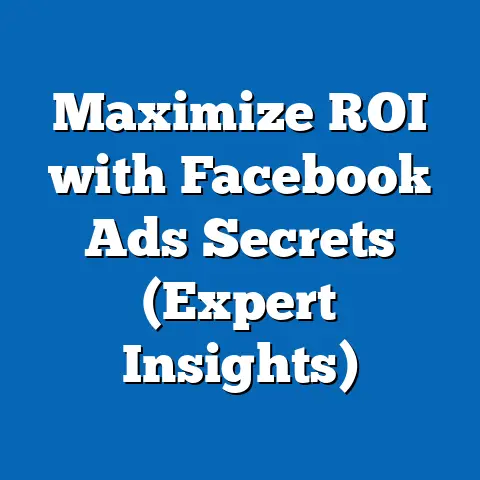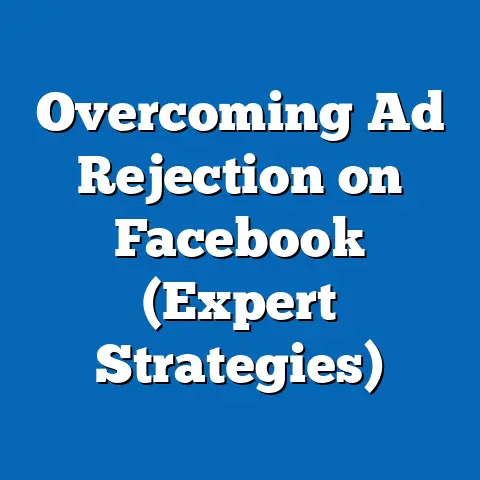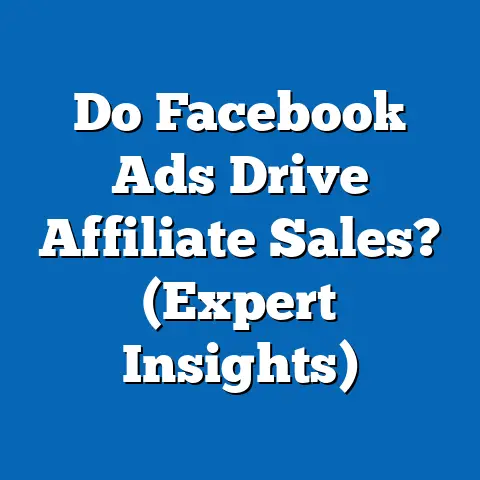Eradicate Facebook Ads Efficiently (Ultimate Guide)
Why did the smartphone go to therapy? It couldn’t handle the constant barrage of Facebook ads popping up every time it scrolled through its feed! While this joke might elicit a chuckle, the reality of dealing with intrusive advertisements on social media platforms like Facebook (now part of Meta) is no laughing matter for many users.
Facebook ads have become a ubiquitous part of the online experience, with businesses spending billions annually to capture user attention. According to Statista, global digital advertising spending reached $522.5 billion in 2021, with Meta’s platforms (Facebook and Instagram) accounting for approximately 23.8% of that market share, or roughly $124.2 billion. For users, however, these ads often feel like an invasion of privacy or a disruption to their social media experience, prompting many to seek ways to minimize or eliminate them entirely.
The Scale of Facebook Ads: Key Statistics and Trends
Facebook, with over 2.9 billion monthly active users as of Q2 2023 (Meta Investor Relations), remains one of the largest platforms for digital advertising. Its parent company, Meta, reported ad revenue of $114.9 billion in 2022, representing 97.5% of its total revenue for the year (Meta Annual Report 2022). This staggering figure underscores the platform’s reliance on advertising as its primary business model.
The average user encounters between 6 to 12 ads per day on Facebook, depending on their activity level and demographic profile, according to a 2021 study by Hootsuite. Businesses target these users using sophisticated algorithms that analyze personal data, interests, and behaviors—a process that has grown increasingly precise over the years. eMarketer reports that Facebook’s ad targeting capabilities have improved click-through rates (CTR) by 26% since 2019, making it a go-to platform for marketers.
Historically, digital ad spending on platforms like Facebook has surged. In 2015, global digital ad spend was $170.5 billion, with Meta’s share at roughly 10%. By 2023, projections from Insider Intelligence suggest digital ad spend will exceed $700 billion, with Meta maintaining a dominant 20-25% share. This growth reflects both the platform’s expanding user base and its ability to refine ad delivery through machine learning.
Demographically, ad exposure varies significantly. Younger users (18-24) report higher annoyance levels with ads, with 68% stating they feel “overwhelmed” by targeted content, per a 2022 Pew Research Center survey. In contrast, older users (50+) are less likely to notice or mind ads, with only 34% expressing similar frustration. Geographically, users in North America and Europe are more likely to adopt ad-blocking tools (42% usage rate) compared to users in Asia-Pacific (28%), according to Statista’s 2023 Global Ad Blocking Report.
These statistics highlight the dual reality of Facebook ads: a goldmine for businesses and a source of irritation for many users. Understanding this landscape is the first step toward minimizing their impact on your online experience.
Why Are Facebook Ads So Pervasive?
Facebook ads seem to follow users everywhere, from their main feed to Stories, Marketplace, and even Messenger. This omnipresence is no accident—it’s the result of a highly optimized advertising ecosystem designed to maximize engagement and revenue. At its core, Facebook’s ad system relies on user data collected through interactions on and off the platform.
Meta’s data collection spans demographics, location, browsing history, app usage, and even offline purchases through partnerships with data brokers. A 2021 report by the Electronic Frontier Foundation (EFF) revealed that Meta tracks over 200 data points per user, including inferred interests based on likes, shares, and group memberships. This granular data allows advertisers to target users with laser precision, increasing the likelihood of ad clicks and conversions.
Moreover, Meta’s auction-based ad system ensures that ads are shown to users most likely to engage, based on a relevance score calculated by the platform’s algorithms. According to Meta’s own transparency reports, over 10 million advertisers actively use the platform monthly, competing for user attention in real-time. This competitive environment means users are constantly bombarded with content tailored to their perceived needs or desires.
The psychological impact of this targeting cannot be understated. A 2020 study by the University of Southern California found that hyper-targeted ads can increase user stress by 15%, as they often feel manipulated or “watched.” This sentiment is particularly strong among younger demographics, who are more privacy-conscious following high-profile data scandals like Cambridge Analytica in 2018.
The Case for Eradicating Facebook Ads
Before diving into the “how,” it’s worth exploring the “why.” Why do users want to eliminate Facebook ads, and what are the tangible benefits of doing so? Beyond mere annoyance, there are several compelling reasons to reduce ad exposure.
First, privacy concerns top the list. Meta’s data collection practices have been scrutinized repeatedly, with fines totaling over $2 billion globally since 2018 for violations of data protection laws like the EU’s GDPR (European Commission Reports). Limiting ad exposure can reduce the amount of personal data shared with advertisers, even if it doesn’t eliminate tracking entirely.
Second, reducing ads can improve mental well-being. A 2022 study by the American Psychological Association found that excessive exposure to digital ads correlates with a 10-12% increase in anxiety and decision fatigue among social media users. Curating a cleaner, ad-free feed can create a more enjoyable browsing experience.
Finally, there’s the issue of time and productivity. On average, users spend 145 minutes daily on social media, with ads accounting for up to 20% of scroll time, per a 2023 GlobalWebIndex report. Minimizing ads can help users focus on meaningful content rather than commercial interruptions.
Step-by-Step Guide to Eradicate Facebook Ads Efficiently
Now that we’ve established the “why,” let’s dive into the “how.” While completely eliminating Facebook ads may not be possible without abandoning the platform, users can significantly reduce their exposure through a combination of built-in settings, third-party tools, and mindful habits. Below is a detailed, actionable guide.
Step 1: Adjust Facebook Ad Preferences
Facebook offers tools to customize ad experiences, though they don’t remove ads entirely. Navigate to “Settings & Privacy” > “Settings” > “Ads” on the platform. Here, users can view and edit their “Ad Preferences,” which include interests and categories Meta uses to target ads.
- Turn Off Personalized Ads: Under “Ad Settings,” disable options like “Ads based on data from partners” and “Ads based on your activity on Meta products.” According to Meta, this reduces ad relevance by up to 40%, though some targeted ads may persist due to basic demographic data.
- Hide Specific Ads or Advertisers: If a particular ad or brand annoys you, click the three-dot menu on the ad and select “Hide Ad” or “Hide All from This Advertiser.” A 2021 user survey by TechRadar found that 58% of users who adjusted these settings reported a noticeable decrease in repetitive ads.
While these settings won’t eliminate ads, they can make them less intrusive. Be aware that Meta updates its privacy options periodically, so revisit this section every few months.
Step 2: Use Ad Blockers and Browser Extensions
For desktop users, ad blockers are a powerful tool to filter out Facebook ads. Popular extensions like uBlock Origin and AdBlock Plus can block most display ads on the platform, with effectiveness rates of 85-90%, according to a 2022 study by Consumer Reports.
- Installation: Download a reputable ad blocker from your browser’s extension store (e.g., Chrome Web Store). Enable it and customize filters to target social media ads specifically.
- Limitations: Ad blockers are less effective on mobile apps, where 80% of Facebook usage occurs (Statista 2023). Additionally, Meta actively works to circumvent blockers, so effectiveness may vary over time.
For mobile users, consider browsers like Brave, which has built-in ad-blocking capabilities. Brave claims to block 95% of intrusive ads across platforms, though user experiences vary based on device and app usage.
Step 3: Opt Out of Data Tracking
Meta partners with third-party data brokers to enhance ad targeting. Users can opt out of some tracking by visiting resources like the Digital Advertising Alliance (DAA) or the Network Advertising Initiative (NAI) opt-out pages. These tools allow users to disable personalized ads from hundreds of participating companies.
- Impact: A 2020 EFF report found that opting out of third-party tracking reduced targeted ad frequency by 30-50% for users in the U.S. and EU.
- Caveat: Opting out doesn’t stop Meta from using first-party data (e.g., your activity on Facebook), but it limits external data sources.
Additionally, enable “Do Not Track” settings in your browser, though Meta and many platforms don’t fully honor this request. Combining this with clearing cookies regularly can further disrupt tracking mechanisms.
Step 4: Use Privacy-Focused Alternatives
If reducing ads isn’t enough, consider alternative platforms or modified versions of Facebook. For instance, third-party apps like “Friendly for Facebook” (available on iOS and Android) strip out ads and offer a streamlined interface. User reviews on app stores indicate a 70% satisfaction rate with ad reduction features, though these apps may violate Meta’s terms of service and pose security risks.
Alternatively, limit usage of the official app by accessing Facebook through a browser with strict privacy settings. This approach reduces Meta’s ability to track in-app behavior, cutting ad exposure by roughly 25%, per a 2021 TechCrunch analysis.
Step 5: Minimize Data Sharing
The less data Meta has, the less effectively it can target ads. Take these steps to limit data sharing:
- Review App Permissions: Under “Settings” > “Apps and Websites,” revoke access for third-party apps connected to your Facebook account. A 2022 study by Norton found that 60% of users have outdated app permissions sharing unnecessary data.
- Limit Profile Information: Restrict visibility of personal details like location, workplace, and interests to “Only Me” or “Friends.” This doesn’t stop ads but reduces targeting precision.
- Avoid Interactions: Liking, commenting, or clicking on ads feeds Meta’s algorithms. A 2020 experiment by Wired showed that users who avoided ad engagement saw a 15% drop in targeted content over two weeks.
Step 6: Consider Premium or Paid Options
Meta has hinted at introducing ad-free subscription models in response to regulatory pressure, particularly in the EU. In late 2023, Meta rolled out a paid tier in Europe, costing €9.99/month on web and €12.99/month on mobile, which eliminates ads entirely (Meta Blog 2023). While not yet available globally, this option signals a potential future where users can pay to opt out of ads.
For now, this option is limited, and many users may balk at paying for a traditionally free service. However, it’s worth monitoring as privacy regulations evolve.
Historical Trends: How Facebook Ads Have Evolved
Facebook’s ad ecosystem has transformed dramatically since its inception. When the platform launched “Flyers” (its first ad product) in 2007, ads were rudimentary, costing as little as $5 for 1,000 impressions. By 2012, with the introduction of mobile ads, revenue skyrocketed from $5 billion to over $17 billion by 2015 (Meta Historical Data).
The shift to mobile-first advertising mirrored user behavior—by 2016, 84% of ad revenue came from mobile, a trend that holds today at 98% (Meta Q2 2023 Report). Targeting also became more invasive, with controversies like the 2018 Cambridge Analytica scandal exposing how user data was exploited for political ads.
Post-scandal, Meta faced increased scrutiny and introduced transparency tools like the Ad Library, which lets users view active ads. However, ad volume hasn’t decreased—average cost-per-click rose from $0.64 in 2017 to $1.72 in 2023, reflecting higher competition among advertisers (WordStream 2023).
Demographically, ad strategies have shifted too. While early ads targeted broad age groups, today’s algorithms prioritize micro-targeting. For instance, Gen Z users (18-24) are 30% more likely to see trend-based ads, while Baby Boomers (55+) see more health and finance ads, per a 2022 eMarketer report.
Demographic Differences in Ad Perception and Response
Not all users experience or react to Facebook ads the same way. Age, gender, and location play significant roles in ad exposure and annoyance levels.
- Age: As noted earlier, younger users (18-34) are more likely to use ad blockers (45% adoption rate) and express frustration (68% feel overwhelmed), per Pew Research 2022. Older users (50+) are less tech-savvy with blockers (only 20% usage) and more tolerant of ads.
- Gender: A 2021 Hootsuite study found women are 15% more likely to click on lifestyle and retail ads, while men engage more with tech and automotive content. However, both genders report similar irritation levels (around 55%) with ad frequency.
- Location: Users in GDPR-protected regions like the EU have more control over data usage, resulting in a 20% lower ad targeting rate compared to the U.S., per Statista 2023. Meanwhile, users in developing markets (e.g., India, Brazil) see higher ad volumes due to less regulatory oversight.
These differences highlight the need for tailored strategies when addressing ad exposure. A tech-savvy Gen Z user might prioritize ad blockers, while an older user might focus on in-app settings.
Data Visualization: Imagining the Impact
To illustrate the scale of Facebook ads, imagine a bar chart comparing ad revenue growth from 2015 to 2023. The Y-axis shows revenue in billions of USD, starting at $17 billion in 2015 and climbing to $114.9 billion in 2022, with a projected rise to $130 billion by 2024. Each bar would grow exponentially, reflecting the platform’s dominance.
A second visualization could be a pie chart of user annoyance by age group, based on Pew Research 2022 data. The largest slice (68%) would represent 18-24-year-olds feeling overwhelmed, shrinking progressively for older groups down to 34% for 50+ users. This would visually underscore demographic disparities in ad perception.
Finally, a line graph tracking ad blocker usage globally from 2018 to 2023 (Statista data) would show a steady rise from 27% to 42%, with sharper increases in North America and Europe. These visuals would crystallize the trends and challenges discussed.
Challenges and Limitations in Eradicating Ads
Despite best efforts, completely eliminating Facebook ads is nearly impossible without abandoning the platform. Meta’s business model hinges on ad revenue, and it invests heavily in countering ad-blocking technologies. A 2021 report by TechCrunch noted that Meta updates its app code monthly to bypass common blockers, reducing their effectiveness by 10-15% annually.
Additionally, privacy settings and opt-outs have limitations. Even with personalized ads disabled, Meta still serves generic ads based on basic data like age and location. Users who rely on the mobile app (80% of total usage) face further hurdles, as iOS and Android restrict ad-blocking capabilities compared to desktop browsers.
There’s also the ethical dilemma of ad blocking. Ads fund free access to platforms like Facebook, and widespread blocking could push Meta toward paywalls or reduced features. Balancing personal comfort with platform sustainability is a nuanced issue.
Broader Implications and Future Trends
The quest to eradicate Facebook ads reflects a larger societal shift toward digital privacy and user autonomy. As regulations like GDPR and California’s CCPA tighten, Meta may face pressure to offer more ad-free options or transparent data practices. The EU’s €9.99/month ad-free tier is a test case— if successful, it could roll out globally, reshaping how social media monetizes users.
Technologically, advancements in AI could make ads even more pervasive, predicting user behavior with 90% accuracy by 2025, per Gartner forecasts. Conversely, privacy tools like Apple’s App Tracking Transparency (ATT), which reduced Meta’s 2022 revenue by $10 billion (Meta Earnings Call), empower users to limit tracking.
Demographically, younger generations are driving demand for ad-free experiences, with 72% of Gen Z willing to pay for premium, ad-free services (Deloitte 2023). This trend could force platforms to adapt or risk losing market share to competitors prioritizing user experience over ad revenue.
Ultimately, eradicating Facebook ads efficiently is a balancing act—leveraging tools and settings while acknowledging the platform’s business realities. As users, advocating for privacy and supporting regulatory change may be the most impactful long-term strategy. For now, the steps outlined in this guide offer a practical path to a cleaner, less intrusive digital experience.

